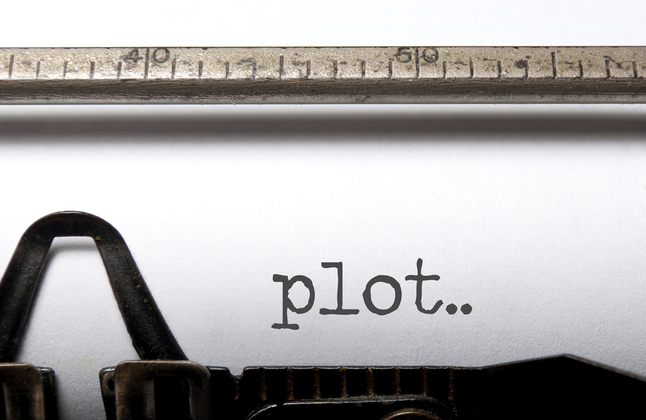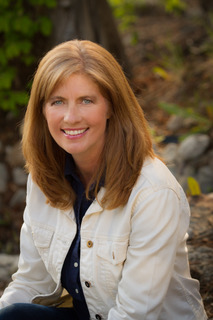
When Lisa at ProWritingAid asked me to write about plot versus story, I thought no problem. I’m a story expert. However, once I started researching the topic, I realized there is a lot of conflicting information out there.
I also realized a discussion about plot and story would be incomplete if we didn’t mention structure. Understanding the difference between plot, structure, and story is important because knowing the difference and how they affect your writing process can help you tell a powerful story.
All three elements are part of the creative writing and editing process. There are many definitions around, so let’s start with those that make sense in terms of the writing and editing process.
Plot is what happens. It is a series of events regardless of their order.
Once you have a plot, you can start working on the structure. You’ll cut, rewrite, and rearrange scenes until you get the structure right.
Structure is the strategic sequence of events that elicit reader emotion.
Story occurs when the “why” and “how” are brought into the mix to reveal the dramatic, thematic, and emotional significance. This is when the creative editing process makes your story shine.
Story is how you influence your readers’ experience.
Plot
Plotter or a panster? You may create an outline and then write your first draft (plotter), or you may write your draft and then go back and create an outline (panster).
Even if you don’t create an outline, you’ll need to know what each scene is about.
An easy way to do this is to name the scenes as you go. The scene name should represent its main theme or action. It should be something you can read and immediately know what happens in the scene.
This is a fast way to get to know your scenes. And by knowing your scenes, you’ll know your plot.
Without an outline and a first draft written, it will be very difficult to get the structure right. You need to understand what each scene is about, the word count per scene, the characters, the location and much more before you can evaluate what you’ve got and work on the structure.
I believe this is why Hemingway said, “The first draft of anything is s**t.” Plot is only the beginning.
Structure
So how does structure fit in? Most of us are familiar with the three-act story structure in terms of a story arc. The story arc has been around for over 2,000 years. It’s a proven form that keeps readers engaged, but it’s not about being formulaic: the story and the imagination behind it are unique to you.
A powerful story contains key plot events. To create a story readers love, these events must happen at the right time.
Once you have the plot in the form of an outline or a first draft, you can work out how your plot is going to fit on the story arc, then you can make sure you create the story you want to tell.
After you know the plot, you’ll work on rearranging the events, creating the structure of the story.
The story arc is made up of the Inciting Incident, Plot Point One, the Midpoint, Plot Point Two, the Climax, and the Resolution.
Let’s demonstrate a story arc in terms of the artist writing a novel.
Inciting Incident: You’ve been living your life, but something just isn’t right. AND THEN…your brain tells you that you need to write a story. You don’t know yet how hard this is going to be, but your world has changed, and you’re going to roll with it. So here’s the problem. How are you going to write 80,000 to 100,000 words and get people to like it? This happens before 15% of your total work count.
Plot Point One: You’ve written 20,000 words or so, spent hours doing this, and there is no turning back. You’ve invested emotion, time, brainpower, and you won’t give up. This happens between 20% and 30% of your total work count.
Midpoint: You’ve made it halfway. Now you really get working. Everything you have is going into the story. This is where you figure how hard it is to write a novel, but you’re determined to solve the problem. You’re proactive in your writing, but you still make mistakes. You guessed it… this happens right around 50% into your story.
Plot Point Two: Your structure is a mess. Everything you’ve written since the middle is making it difficult to bring the story together. You don’t know how to end the story, but you know you must work hard to finish or you’ll lose the whole story — and maybe a little part of yourself, too. The happens between 70% and 80% of your total work count.
Climax: You are going to overcome your demons and finish the story. Your adrenaline is rushing. You’ve got this. You just have to fight your way through. You’re almost at the word count you need, and you’ve solved your problem. This happens between 85% and 95% of your total word count.
Resolution: You’ve changed from a would-be writer to an author. The hard work was worth it. There may even be a part of you that’s looking forward to writing the next book.
You can use the key scenes to analyze your plot and determine if you have each scene in the right place. You’ll have noticed there is a range for the placement of each event, so don’t get stressed if you’re not exact. You’ll come back to these later and check the scene placement after you’ve worked on the final step.
The Art of Story
James N. Frey calls story “the fictive dream.” To me, this means transporting your readers, so they feel as if they are experiencing your story in real life. This is similar to how we experience dreams that feel real to us. Plot and structure alone can’t transport anyone anywhere, but a good story can.
Regardless of how you define the terms, the end result is a story that brings out the emotions of the readers so they forget they are reading. The story is the final product you share with the world.
Whether you’re a plotter or a panster, you’ll have plot and structure. You’ll just come to them in your own way. Self-editing will help you transform your words into a powerful story.
When you’re editing, you’ll look at who has the POV for a scene (how a scene is experienced), and what the character goals and motivations are (the why of what is happening).
The story is formed from plot and structure combined with artistry.
Finally we get to the art of story. This is where you look at every scene as ask:
Who has the point of view (POV) for each scene?
The point of view character is the character who is telling the story at any given moment.
When you choose a point of view character for a scene, you promise your readers that they will experience the scene from that character's perspective. It’s up to you to decide the best point of view character for each scene. Don’t just use the obvious. Think about who will make the experience feel real to the reader.
What is the POV character’s goal?
The POV goal is what the POV character wants during a scene. Goals drive your story forward. If a character doesn't have a goal, then what are they doing? A character without a goal is a boring character. There’s no one for the reader to root for or against, no meaningful obstacle to put in their way — and no reason for your reader to keep reading.
Once you know your character’s goal, think about different ways they could fail, what obstacles you can put in their way, and how they would feel about these challenges.
A three-dimensional character should have both internal and external goals.
The internal goal of the POV character has to do with a weakness the character must overcome. The weakness will hinder the character and is something they must overcome to reach the overriding plot goal. Without an internal goal, the character will seem flat.
The external goal is what a character wants in the story not what they want in life. The external goal is the goal a character shows the world. In a fantasy novel, this might be to defeat an evil enemy or locate a magic object.
What is the purpose of each scene?
There must always be a reason why any given scene exists in your story: that’s what we mean by its purpose. If a scene doesn’t drive the story forward, then ask yourself why it’s even in your novel. Think about how the reader will experience the purpose.
You may discover scenes that don’t seem to serve any of these purposes. This happens to me when I get so involved in writing a scene, I forget how it fits into the overall story.
If a scene has no purpose, either connect it back to the story, or cut it from your novel and save it. Who knows — you might be able to use it if you write a prequel or a sequel, or even for another series entirely.
Is the location of the scene the best place for the emotion you want your reader to experience?
Choosing where a scene happens has a massive impact on how it plays out. Once you've determined the location of each scene, ask yourself: How can your choice of location resonate with your POV character's emotional state?
Does it:
- Increase or decrease conflict?
- Increase or decrease tension?
- Set the mood?
- Highlight emotion?
- Show characterization?
- Slow down or speed up pacing?
Thinking in terms of emotional impact will help you choose the best location. Answering these questions for each scene will give you the how and why of each scene.
And when you’ve answered these, you’ll ask yourself if this is the best way to tell the story. The process of moving from structure to story is the same as moving from plot to structure. You’ll cut, rewrite, and rearrange scenes until you get the story right.
Powerful Stories
Plot is what happens.
Structure is the strategic sequence.
AND
Story is how you influence your readers’ experience.
You’ll have noticed everything in the Art of Story relates to how the reader is experiencing your story. This takes us right back to “a good story makes the reader feel as if they are experiencing your story in real life.”
The way to accomplish this is to create your plot, get the structure right, and transform it all into a powerful story.
Writing a novel is a big undertaking, both intellectually and emotionally. Being thorough can be difficult and time-consuming, but the creative story editing process always pays off.
I’d love to hear your thoughts on plot versus structure versus story. Let me know what you think or if you have questions in the comments below.
Happy writing!

